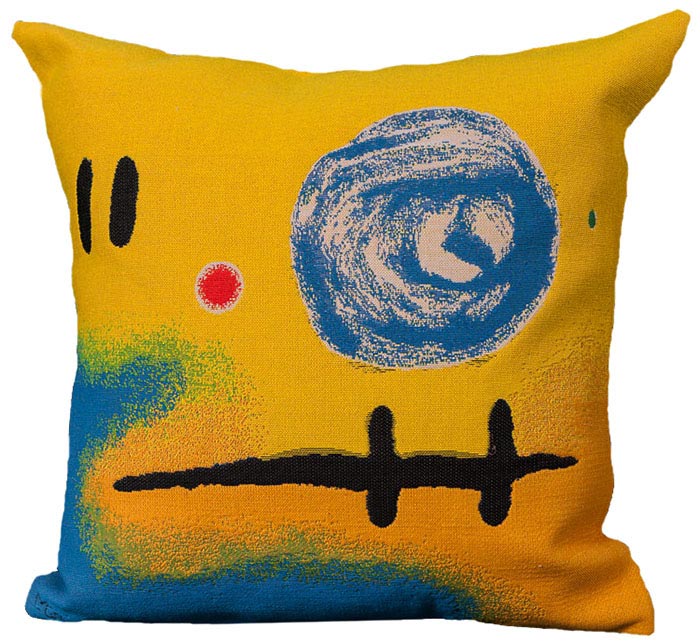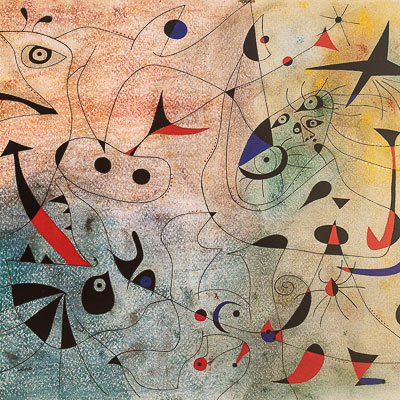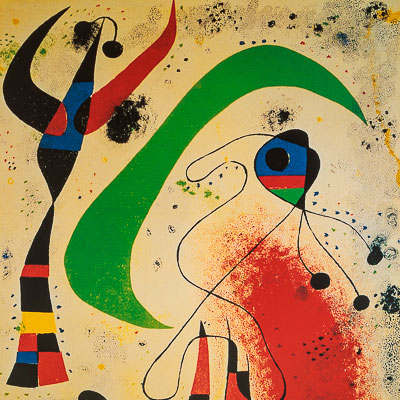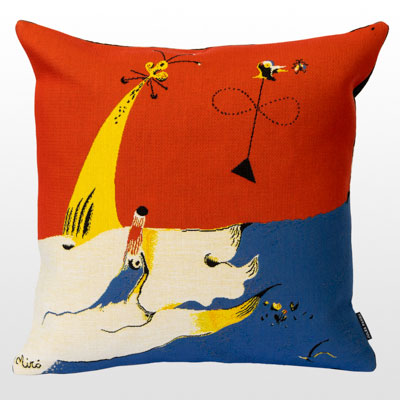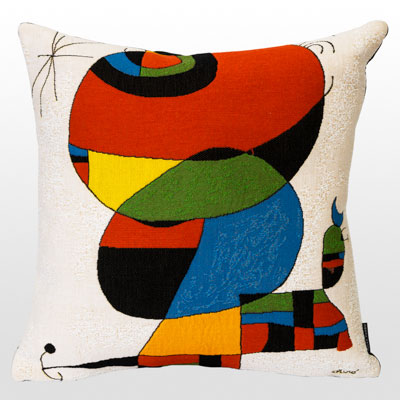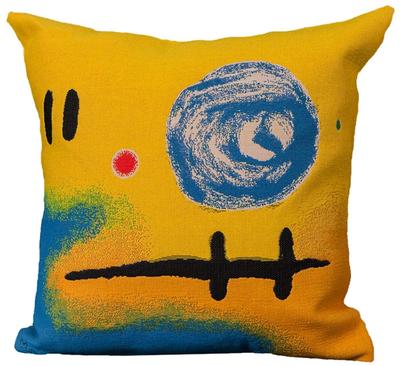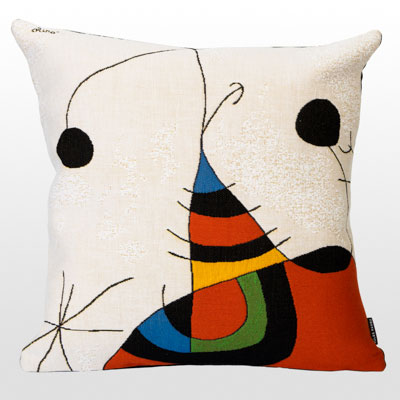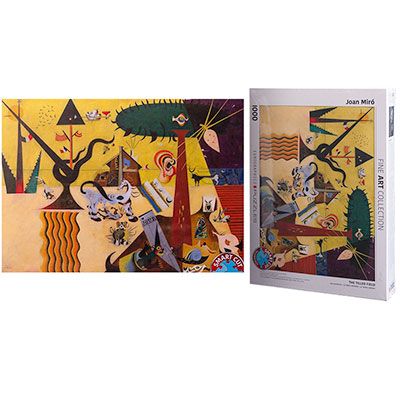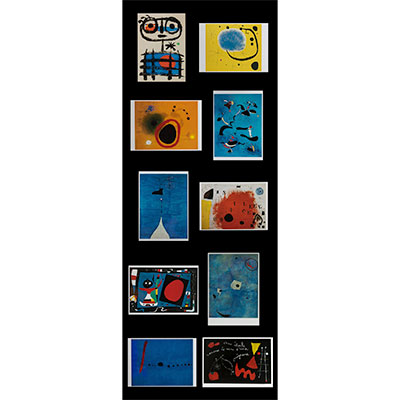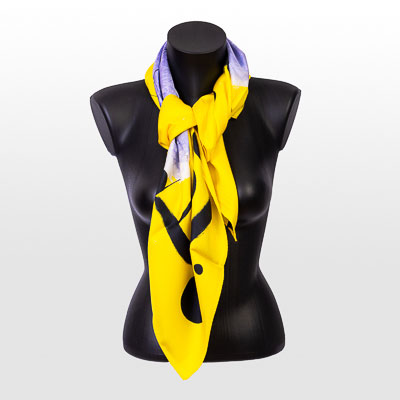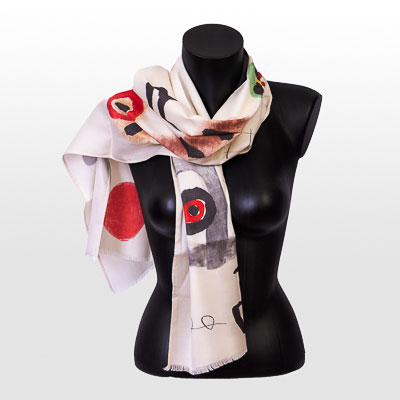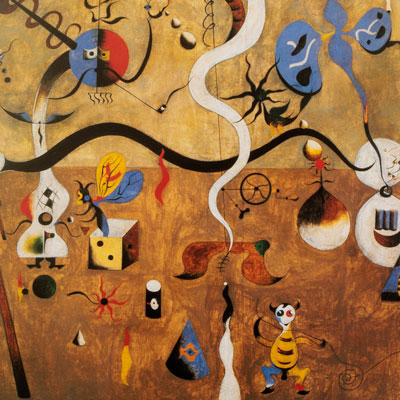Tel : (+33) 4 94 63 18 08
9am - 6pm from Monday to Sunday
All products Joan Miro • Products of the topic Abstract
Joan Miro Cushion cover : 2, 5, 7
REF : COUS-JM-06
In stock
Only 1 in stock
Unavailable
99,00 €
(108.12 USD)
Joan Miro Cushion cover : "2+5=7"
Based on the work of Joan Miró, with the agreement of Successio Miró.
In 2012, Jules Pansu was awarded the EPV label - Entreprise du Patrimoine Vivant - which rewards the excellence of French know-how. All our covers are made in France, woven on jacquard looms by two Best Workers in France.
Made in France
90% cotton, 5% Polyester
Dimensions : 45 x 45 cm
Surrealism
Surrealism is an artistic and literary movement that emerged in the early 20th century, primarily in Europe. It was founded by André Breton, who published the "Surrealist Manifesto" in 1924, defining the principles and goals of the movement. Surrealism was inspired by the ideas of Sigmund Freud on the unconscious and focused on the exploration of the unconscious and the subconscious, often through the use of automatism techniques (writing or painting without consciously thinking). In painting, surrealism manifested itself through the use of strange or irrational motifs and symbols, as well as the incorporation of surprising or incongruous details in the paintings. Among the famous surrealist artists in painting are Salvador Dali, Frida Kahlo, Rene Magritte and Max Ernst. Salvador Dali is a Spanish surrealist artist known for his surrealist paintings. One of his most famous works associated with surrealism is "The Persistence of Memory" (1931). Dali also created many other surrealist works, such as "The Dream Caused by the Flight of a Bee Around a Pomegranate a Second Before Awakening" (1944) and "The Great Masturbator" (1929). Rene Magritte is a Belgian surrealist artist known for his paintings that play with perspective and visual illusions. One of his most famous works is "The Treachery of Images" (1929), where he painted a pipe saying "This is not a pipe". Magritte also created many other surrealist works, such as "The Human Condition" (1933) and "The Empire of Lights" (1954). Max Ernst is a German surrealist artist known for his paintings filled with strange and dreamlike motifs. One of his most famous works is "Europe After the Rain II" (1940-42). Surrealism had a significant impact on 20th century art and culture and continues to influence many artists around the world. The movement paved the way for new forms of artistic expression by highlighting the importance of the unconscious and encouraging the use of automatism techniques. Many artists were influenced by surrealism and continued to explore these themes in their works, even after the end of the movement in the mid-20th century.
Discover the artist
Miro Joan
Joan Miró was a 20th century Spanish artist, known as one of the most important representatives of Surrealist art. Born on April 20, 1893 in Barcelona, Spain, Miró grew up in a bourgeois family and began studying art at the age of 14. He studied at the School of Fine Arts in Barcelona and was influenced by the Cubist and Dadaist movements. Throughout his career, Miró explored many styles and techniques, including abstraction and Surrealism. His most famous works include paintings such as "The Harlequin's Carnival" and "The Ladder of Escape," as well as bronze sculptures like "Woman, Bird, Star." Miró was also known for his drawings, prints, and graphic works. Miró worked on many projects in collaboration with other artists and designers, including the decoration of the Paris Opera and the International Exposition in Barcelona. In addition to his artistic career, he also taught and held workshops at several institutions, including the Académie Ranson in Paris and Harvard University in the United States. Miró passed away on December 25, 1983 in Palma de Mallorca in Spain.
Miro Joan
Joan Miró was a 20th century Spanish artist, known as one of the most important representatives of Surrealist art. Born on April 20, 1893 in Barcelona, Spain, Miró grew up in a bourgeois family and began studying art at the age of 14. He studied at the School of Fine Arts in Barcelona and was influenced by the Cubist and Dadaist movements. Throughout his career, Miró explored many styles and techniques, including abstraction and Surrealism. His most famous works include paintings such as "The Harlequin's Carnival" and "The Ladder of Escape," as well as bronze sculptures like "Woman, Bird, Star." Miró was also known for his drawings, prints, and graphic works. Miró worked on many projects in collaboration with other artists and designers, including the decoration of the Paris Opera and the International Exposition in Barcelona. In addition to his artistic career, he also taught and held workshops at several institutions, including the Académie Ranson in Paris and Harvard University in the United States. Miró passed away on December 25, 1983 in Palma de Mallorca in Spain.
Miro Joan
Joan Miró was a 20th century Spanish artist, known as one of the most important representatives of Surrealist art. Born on April 20, 1893 in Barcelona, Spain, Miró grew up in a bourgeois family and began studying art at the age of 14. He studied at the School of Fine Arts in Barcelona and was influenced by the Cubist and Dadaist movements. Throughout his career, Miró explored many styles and techniques, including abstraction and Surrealism. His most famous works include paintings such as "The Harlequin's Carnival" and "The Ladder of Escape," as well as bronze sculptures like "Woman, Bird, Star." Miró was also known for his drawings, prints, and graphic works. Miró worked on many projects in collaboration with other artists and designers, including the decoration of the Paris Opera and the International Exposition in Barcelona. In addition to his artistic career, he also taught and held workshops at several institutions, including the Académie Ranson in Paris and Harvard University in the United States. Miró passed away on December 25, 1983 in Palma de Mallorca in Spain.
Miro Joan
Joan Miró was a 20th century Spanish artist, known as one of the most important representatives of Surrealist art. Born on April 20, 1893 in Barcelona, Spain, Miró grew up in a bourgeois family and began studying art at the age of 14. He studied at the School of Fine Arts in Barcelona and was influenced by the Cubist and Dadaist movements. Throughout his career, Miró explored many styles and techniques, including abstraction and Surrealism. His most famous works include paintings such as "The Harlequin's Carnival" and "The Ladder of Escape," as well as bronze sculptures like "Woman, Bird, Star." Miró was also known for his drawings, prints, and graphic works. Miró worked on many projects in collaboration with other artists and designers, including the decoration of the Paris Opera and the International Exposition in Barcelona. In addition to his artistic career, he also taught and held workshops at several institutions, including the Académie Ranson in Paris and Harvard University in the United States. Miró passed away on December 25, 1983 in Palma de Mallorca in Spain.
Miro Joan
Joan Miró was a 20th century Spanish artist, known as one of the most important representatives of Surrealist art. Born on April 20, 1893 in Barcelona, Spain, Miró grew up in a bourgeois family and began studying art at the age of 14. He studied at the School of Fine Arts in Barcelona and was influenced by the Cubist and Dadaist movements. Throughout his career, Miró explored many styles and techniques, including abstraction and Surrealism. His most famous works include paintings such as "The Harlequin's Carnival" and "The Ladder of Escape," as well as bronze sculptures like "Woman, Bird, Star." Miró was also known for his drawings, prints, and graphic works. Miró worked on many projects in collaboration with other artists and designers, including the decoration of the Paris Opera and the International Exposition in Barcelona. In addition to his artistic career, he also taught and held workshops at several institutions, including the Académie Ranson in Paris and Harvard University in the United States. Miró passed away on December 25, 1983 in Palma de Mallorca in Spain.




























































































